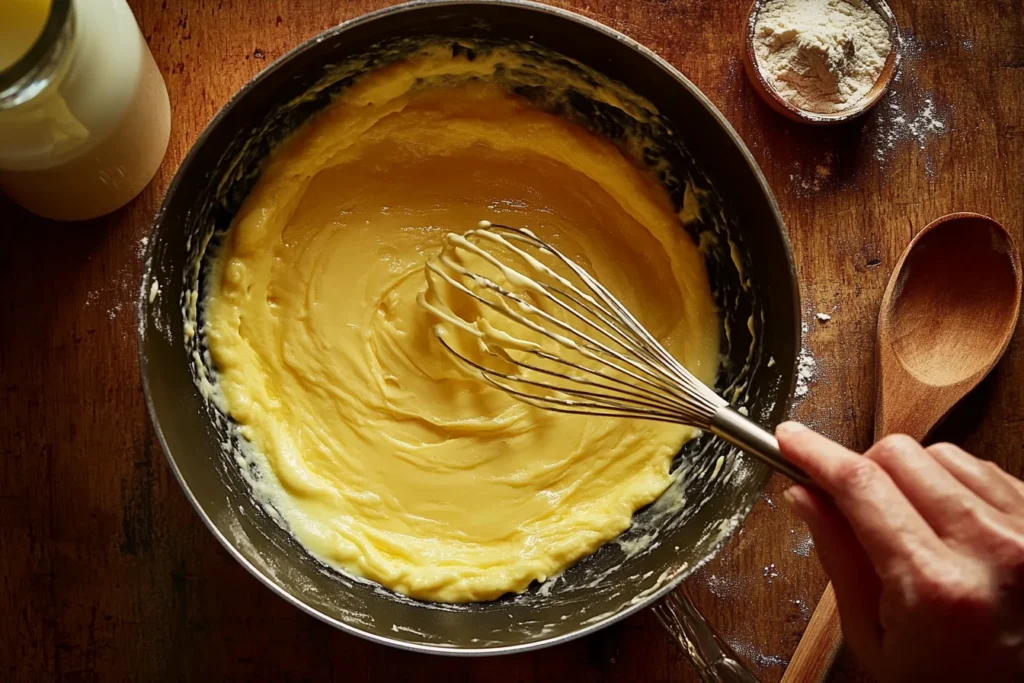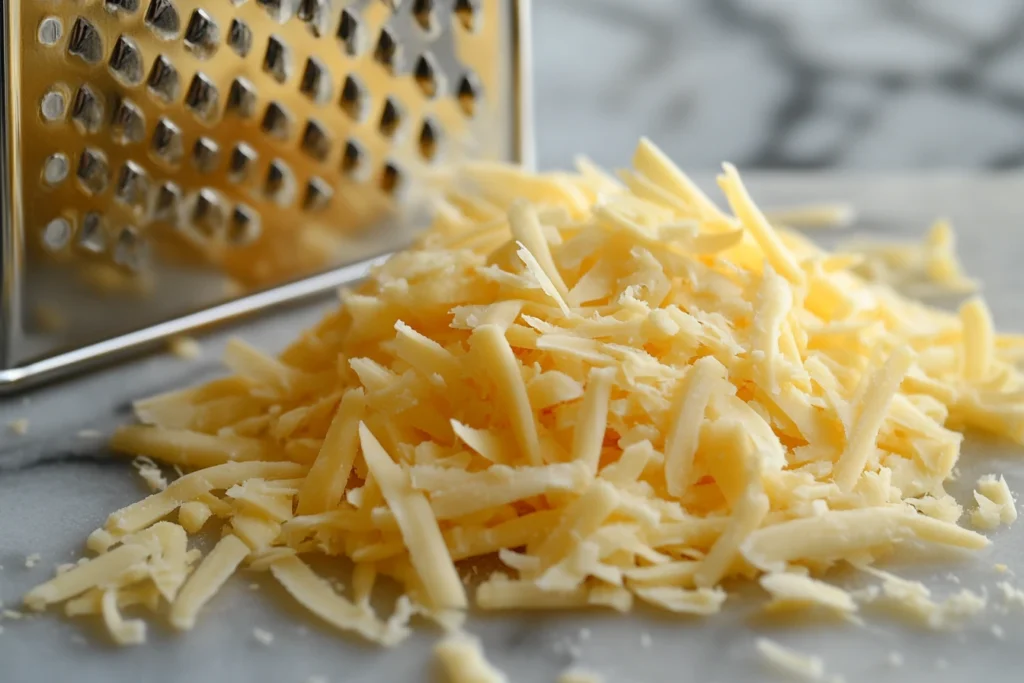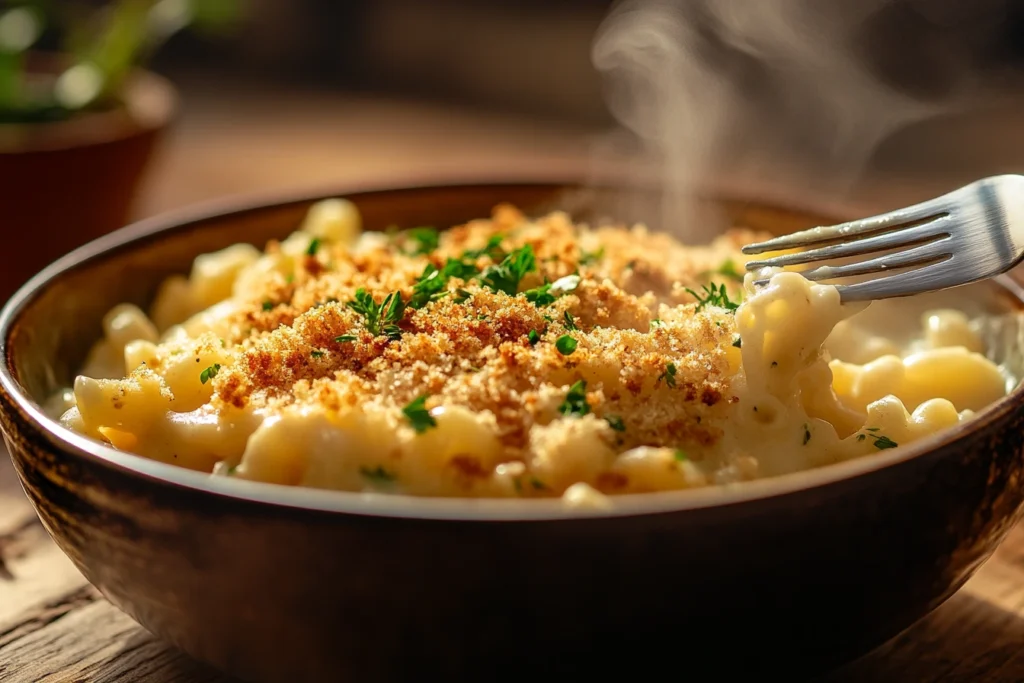What Is the Trick to Keeping Mac and Cheese Creamy?
A Cheesy Mystery Worth Solving
Mac and cheese has a way of making everything feel right in the world—until it turns grainy, oily, or dry. We’ve all been there: spoon poised mid-air, wondering what happened to the silky, luscious cheese sauce from ten minutes ago?
So what is the trick to keeping mac and cheese creamy from stovetop to serving (and even reheated leftovers)? It’s not just one secret—it’s a flavorful symphony of technique, timing, and the right ingredients.
Whether you’re making it from scratch or jazzing up a boxed version, mastering creaminess means understanding the science of your sauce and a few clever tricks from chefs who’ve failed and flopped their way to cheesy perfection. (Chef Aila may or may not be speaking from experience.)
Let’s melt into the delicious details.
2. The Science Behind Creamy Mac and Cheese
Believe it or not, making the perfect creamy mac and cheese isn’t just culinary—it’s chemistry. And once you understand a few behind-the-scenes principles, you’ll never suffer through a broken or clumpy sauce again.
It Starts with Starch
When pasta cooks, it releases starch into the water. This starchy residue is key to achieving a sauce that clings instead of slides off. That’s why many recipes suggest not rinsing your cooked pasta. The starch acts as a natural binder, helping the sauce stick and thicken just enough to coat every curve and crevice of your noodles.
Pro tip: If your sauce is feeling too thin, a splash of reserved pasta water can help it emulsify and pull everything together.
Fat Is Your Friend—In Balance
Creamy sauces rely on a balance of fat and moisture. Cheese is naturally fatty, especially the good melting kinds like cheddar, Monterey Jack, or Fontina. Add butter or cream to the mix, and you have the luscious mouthfeel we all crave.
But here’s the trick: too much fat without emulsification = separation. That’s when you get greasy pools instead of creamy heaven.
Say Hello to Emulsification
Emulsification is what binds water-based liquids (like milk or cream) and fat-based ones (like cheese and butter) into a smooth, unified sauce. To make this happen:
- You need heat, but not too much.
- You need stirring, but not aggressively.
- And you need the right binding agents—like a roux or even a bit of starch—to keep everything stable.
When done right, this process gives you that dreamy, velvety cheese sauce that doesn’t break or clump.
3. Mastering the Roux: The Foundation of Smooth Sauce

So you want silky, stable, creamy mac and cheese? The secret weapon is something French, simple, and totally magical: the roux.
What’s a Roux, and Why Does It Matter?
A roux (pronounced “roo”) is a mixture of fat and flour cooked together to create a thickening base for sauces. In mac and cheese, it acts like culinary glue—holding the cheese and dairy together so your sauce doesn’t separate into an oily mess.
Keep stirring until the mixture thickens into a glossy base sauce—this is your béchamel. Once it’s smooth, you’re ready to melt in the cheese. For more science-backed insights into roux-based sauces, check out Serious Eats’ mac and cheese method .
How to Make a Roux for Smooth Mac and Cheese
Chef Aila’s go-to method is all about simplicity and timing. Here’s the breakdown:
Ingredients:
- 2 tablespoons unsalted butter
- 2 tablespoons all-purpose flour
Step-by-Step:
- Melt the Butter:
In a medium saucepan over medium heat, melt the butter until it just starts to bubble. Avoid browning it for this recipe—we want a pale roux. - Whisk in the Flour:
Sprinkle in the flour while whisking continuously. The goal is to coat the flour evenly in butter so it doesn’t clump. - Cook It Out:
Keep whisking for 2–3 minutes. You’re cooking out that raw flour taste. The roux should smell slightly nutty but still look pale or lightly golden. - Add Warm Milk or Cream Gradually:
Slowly pour in your warmed milk or cream (more on choosing between the two in the next section) while whisking constantly. This step helps prevent lumps and ensures the roux fully dissolves into the liquid. - Stir Until Smooth and Thickened:
Keep stirring until the mixture thickens into a glossy base sauce—this is your béchamel. Once it’s smooth, you’re ready to melt in the cheese.
Roux Troubleshooting Tips
- Lumpy sauce? You may have added cold milk too quickly. Warm milk blends more easily.
- Sauce too thick? Add a splash more milk or reserved pasta water to thin it out.
- Grainy texture? The cheese may have gone in too early or at too high heat. Always add cheese off the heat for best results.
Chef Aila’s secret? “Patience. Stir like it’s your love language and don’t rush the magic.”
4. Choosing the Right Dairy: Heavy Cream vs. Milk in Mac and Cheese
When it comes to mac and cheese, your dairy choice can take the sauce from silky and indulgent to thin and disappointing. And yes, the great debate—heavy cream vs milk in mac and cheese—deserves your full attention.
Heavy Cream: Richness in Every Bite
Heavy cream (also labeled as “heavy whipping cream”) has a fat content of around 36–40%, which means it brings serious body and richness to your cheese sauce. It creates a velvety, luxurious mouthfeel that clings beautifully to noodles and holds up well, even if you reheat it.
Pros:
- Ultra-creamy, thick sauce
- Stable when heated
- Great for baked mac and cheese
Cons:
- High in fat and calories
- Can overpower the cheese flavor if used too heavily
If you’re looking to create a creamy sauce without using heavy cream, consider exploring recipes that utilize milk as a substitute. Our guide on Easy Homemade Alfredo Sauce With Milk – Creamy & Delicious! offers insights into achieving a rich texture using milk, which can be applied to mac and cheese preparations as well.
Chef Aila’s tip: “Add a splash of heavy cream at the end—even if you used milk earlier. It gives the sauce that ‘wow’ finish.”
Milk: Lighter, More Balanced
Whole milk is the classic base for mac and cheese, with around 3–4% fat. It’s lighter than cream, which allows the cheese flavors to shine without overwhelming the palate.
Pros:
- Lighter and more balanced flavor
- More cost-effective and fridge-friendly
- Great for stovetop mac and cheese
Cons:
- Can make for a thinner sauce if not thickened well
- Less forgiving—easy to separate or curdle if overheated
If you’re after everyday comfort food that doesn’t leave you feeling overly full, milk is your best friend—just make sure you’ve got a good roux to help thicken things up.
The Goldilocks Combo: Why Not Both?
Many chefs (including Chef Aila) swear by using a mix of milk and cream. Start your béchamel with whole milk, then swirl in a few tablespoons of heavy cream toward the end. This approach gives you the best of both worlds: flavor-forward, rich, but still beautifully pourable.
Verdict:
- For ultra-decadent, crowd-pleasing mac: use heavy cream.
- For a classic stovetop version: go with milk (or a combo).
5. Selecting and Incorporating Cheeses

Mac and cheese offers endless possibilities for customization, from the choice of cheeses to the addition of unique flavors. For those interested in exploring a smoky twist on this classic dish, our Smoked Mac and Cheese: Recipes, Variations, Cooking Tips provides detailed guidance on achieving that rich, smoky flavor.
Best Melting Cheeses for Creamy Mac
Not all cheeses melt the same way. Some get stretchy and gooey (mozzarella), while others turn oily or grainy if handled wrong (looking at you, pre-shredded cheddar). The key is to pick cheeses that melt smoothly and taste great.
Top choices for creaminess:
- Sharp cheddar: Classic. Melts well and brings bold flavor.
- Fontina: Buttery, soft, and oh-so-melty.
- Gruyère: Adds a hint of nuttiness and melts like a dream.
- Monterey Jack: Mild, creamy, and a good “supporting” cheese.
- Cream cheese (in small amounts): Adds silkiness and a slight tang.
Why Cheese Choice Matters
Cheese contains proteins and fats that, when heated, can break apart if not supported by a creamy base. That’s why a well-made roux (see Section 3!) is essential—it gives the cheese something to cling to. Without it, the sauce can “break,” and you’re left with gritty sadness.
Avoiding Grainy or Clumpy Cheese Sauce
If you’ve ever experienced cheese that clumps or turns gritty, you’re not alone. Here’s how to avoid that heartbreak:
1. Shred your own cheese.
Pre-shredded cheese is convenient, but it’s coated in anti-caking agents like cellulose, which prevent smooth melting.
2. Add cheese off the heat.
Turn off the heat and then stir in your cheese a handful at a time. This prevents overheating and helps everything melt gently and evenly.
3. Mix cheeses for flavor and texture.
A sharp cheddar gives punch, while creamy Jack or Fontina keeps the texture velvety. Don’t be afraid to blend two or three kinds for depth and balance.
Chef Aila’s take: “Good cheese is like a good dinner guest—don’t overwhelm the party, just bring something tasty to the table.”
6. Pasta Matters: Cooking and Selection Tips
Believe it or not, pasta is more than just a delivery system for cheese—it’s a key player in achieving that ultra-creamy mac and cheese.
Pick the Right Shape
Not all noodles are created equal when it comes to holding onto sauce. If you’re using smooth spaghetti or penne and wondering why all the sauce is puddling at the bottom of the bowl… now you know.
Top pasta picks for creamy mac and cheese:
- Elbow macaroni: A classic for a reason. The ridges and curves trap sauce beautifully.
- Cavatappi: Spirals that create perfect little sauce pockets.
- Shells: Mini bowls of cheesy goodness in every bite.
- Fusilli: Twists that grip creamy sauce with every curve.
Look for pasta with ridges (rigate) and hollow centers—they’re natural sauce magnets.
Don’t Overcook It
Here’s where many creamy dreams go wrong: overcooked pasta will turn mushy and absorb too much sauce, leaving your mac dry and sad.
Pro tip:
Cook pasta just shy of al dente—it should still have a little bite. It’ll continue to soften as it sits in the hot cheese sauce.
If you’re baking your mac and cheese, take it off the heat even earlier—baking adds a few more minutes of cooking time, and you want to avoid pasta turning to mush.
Save That Pasta Water
Remember the starch magic we talked about earlier? Reserve a half cup of pasta water before draining. A splash can loosen up your sauce if it thickens too much or starts to separate.
Chef Aila’s go-to line: “Treat pasta like a sponge—it’ll soak up whatever it can, so make that cheese sauce count.”
7. Preventing and Fixing Separated Sauce
You nailed the roux. You picked melty cheese. Everything looked dreamy… until your sauce suddenly turned oily or grainy. Heartbreaking, right? Let’s talk about why that happens—and more importantly, how to fix it when it does.
Why Cheese Sauce Separates
There are three main culprits:
- Too much heat – Cheese can’t handle high temps. If it’s bubbling or boiling, you’re asking for trouble.
- Wrong cheese or method – Pre-shredded cheese or dumping it in all at once can lead to clumps and oil.
- Lack of emulsifier – Without a proper base (like a roux or starch), fats and liquids won’t bind.
How to Fix Separated Mac and Cheese Sauce
If the sauce starts to separate:
- Take it off the heat immediately.
- Add a splash of warm milk or cream while whisking gently. This can help pull the sauce back together.
- Whisk in a small spoonful of cream cheese—it acts like a stabilizer.
- If that doesn’t work, try mixing in a slurry of cornstarch and water and reheat gently while stirring. You can also explore The Kitchn’s creamy mac tricks (external link) to better understand how ingredients interact when a sauce separates.
Sometimes you can’t fully “undo” the separation, but you can rescue the texture enough to make it delicious again.
Pro Tips to Avoid Separation
- Add cheese gradually and off the heat
- Use room temperature cheese when possible
- Stick to recipes that include a roux or stabilizer
- Stir gently—overworking cheese can make it stringy
Chef Aila’s hard-won wisdom: “Sauce separation is like heartbreak—it happens fast, but if you catch it early, you can still save the night.”
8. Quick Tips for Ultimate Creaminess
Short on time? These are your go-to moves:
- Use a roux every time—it’s the backbone of smooth sauce.
- Mix whole milk + a splash of heavy cream for perfect richness.
- Always grate your own cheese—no pre-shredded shortcuts.
- Add cheese off the heat to prevent clumps.
- Stir in cream cheese or sour cream for an extra-creamy finish.
- Don’t overbake—keep the center soft and gooey!
9. FAQs
Can I make mac and cheese ahead of time without losing creaminess?
Yes—just add a little extra sauce so it stays moist when reheated. Reheat gently with a splash of milk to revive creaminess.
How do different thickeners affect the texture?
Roux creates the smoothest base. Cornstarch works in a pinch but can feel a little slick. Flour-only thickening may result in graininess without enough fat.
Are there dairy-free options that still turn out creamy?
Absolutely! Try unsweetened oat milk or cashew cream with vegan butter and cheese. Add a spoonful of nutritional yeast for a cheesy flavor boost.
10. Final Stir of the Spoon

So, what is the trick to keeping mac and cheese creamy? It’s a combo of care, chemistry, and a little culinary love. Master your roux, balance your dairy, treat your cheese gently, and don’t forget—your pasta deserves attention too.
From stovetop to baked, from weeknight quick-fix to dinner party star, creamy mac and cheese is totally within reach. And hey, even if you mess it up a little? It’s still cheese and pasta. You win.
